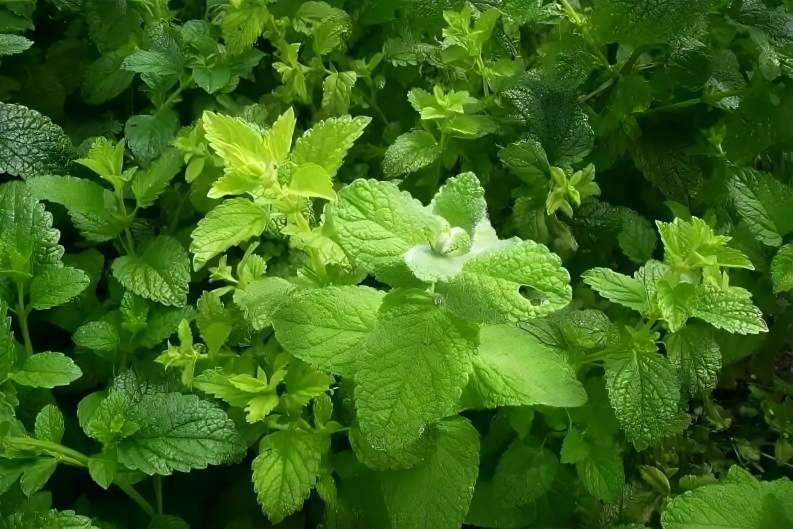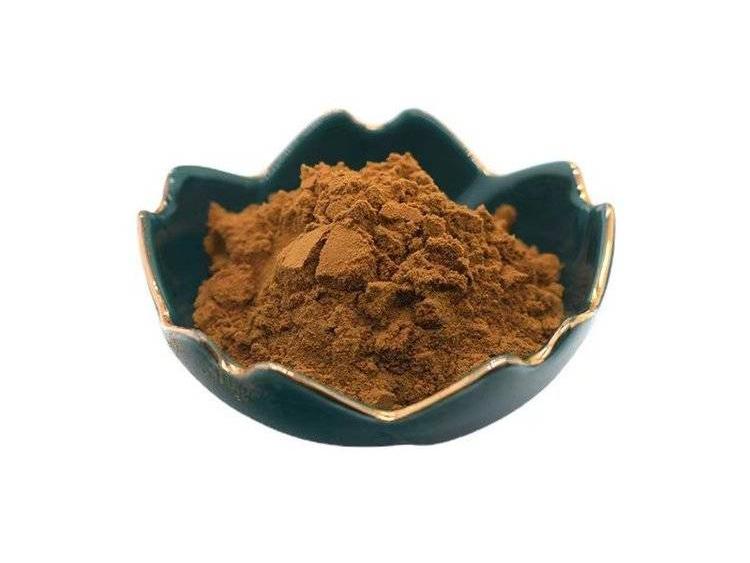Lemon Balm Extract: A Modern Health Ingredient Rooted in Ancient Wisdom
Lemon balm (Melissa officinalis L.), also known as lemon balm or bee balm, is a perennial herbaceous plant in the Lamiaceae family, renowned for its distinctive lemon aroma and long history of use. Since ancient times, lemon balm has been valued as a plant of special significance in the Mediterranean and West Asia regions. Today, through modern extraction techniques, its active components are efficiently extracted and widely applied in the health products sector.
Green Spring Technology selects premium-quality lemon balm and employs standardized extraction processes to isolate its abundant natural bioactive compounds, providing customers with lemon balm extracts characterized by stable flavor and well-defined composition. This raw material is suitable for diverse applications including functional foods, calming teas, emotional wellness products, and natural fragrances, empowering brands to develop more competitive and differentiated natural health products.

1 Natural Active Ingredient Analysis: The Diverse Application Value of Lemon Balm Extract
Lemon balm is not only rich in various vitamins, minerals, and trace elements—with potassium, calcium, selenium, and other components significantly higher than in ordinary vegetables—but also contains multiple natural active ingredients such as citral, citronellal, rosmarinic acid, and luteolin. These components endow it with broad health application potential. Liquan Technology employs standardized extraction processes to maximize retention of these high-value components, providing customers with safe, stable, and potent lemon balm extract raw materials.
The extract's synergistic blend of aldehydes, terpenes, phenols, and flavonoids imparts a fresh, natural flavor profile alongside multifaceted bioactivity. This makes it suitable for developing diverse functional products targeting mood regulation, antioxidant support, and daily wellness maintenance. For instance, it can be incorporated into sleep-aid gummies, relaxation-focused solid beverages, mood-supporting tea bags, antioxidant functional foods, and natural, gentle skincare products, meeting consumers' growing demand for “naturally derived” formulations.
2 Lemon Balm Extract: A Multi-Functional Natural Ingredient Empowering Health Product Innovation
As a highly regarded natural botanical ingredient, lemon balm extract garners significant attention in the health product sector due to its diverse bioactivities. Liquid Spring Technology leverages modern extraction techniques to provide customers with high-purity, standardized lemon balm extracts, supporting the development of functional foods and supplements for mood soothing, sleep support, and antioxidant benefits.
This extract aids in emotional relaxation and cognitive comfort, with active components that support neurotransmitter balance and promote calming experiences. Research indicates that lemon balm extract exhibits acetylcholinesterase inhibitory properties, aiding in maintaining optimal nervous system function and enhancing brain health potential.
Lemon balm extract also demonstrates excellent antioxidant properties, effectively scavenging free radicals and protecting cells from oxidative damage. Its polyphenols, flavonoids, and terpenoids synergistically deliver antioxidant benefits, making it suitable for applications that delay product oxidation and enhance body protection.
Additionally, this ingredient possesses natural antimicrobial properties, effectively inhibiting various common microorganisms. This supports the development of more natural, clean-label health products and foods while providing natural preservation benefits for formulations.
Lemon balm extract has also been reported to help improve metabolic health by supporting balanced blood sugar and lipid metabolism. It can assist in regulating metabolic enzyme activity through multiple pathways, promoting healthy metabolic states, making it suitable for weight management and metabolic support product development.
Through rigorous quality control and standardized production processes, Green Spring Technology ensures consistent, reliable quality and stable active components in every batch of lemon balm extract, helping customers easily address consistency, safety, and compliance challenges in product development. We provide full-process technical support to jointly advance the innovation of natural, scientific, and effective health products.

3 Science Empowering Natural Ingredients: Health Applications and Industrial Value of Lemon Balm Extract
As a natural botanical ingredient with extensive research backing, lemon balm extract demonstrates diverse application potential in the health product sector. Existing studies provide valuable insights into its functions in mood soothing, cognitive support, and antioxidant properties, offering scientific foundations for developing related functional foods.
Green Spring Technology adheres to a rigorous scientific approach, focusing on the standardized R&D and production of lemon balm extract. Through advanced processing techniques and stringent quality control, we ensure the stability, safety, and consistency of our raw materials. We are committed to collaborating with industry partners to explore innovative applications of lemon balm extract in health products, delivering more premium natural health solutions to consumers.
Contact us for additional product information and technical support at helen@greenspringbio.com or WhatsApp: +86 13649243917. Let us advance the health industry together.
References
[1]Liu Huichao, Jia Wenqing, Chen Yun. Tissue culture and rapid propagation of Melissa officinalis [J]. Anhui Agricultural Science, 2006, 34(19): 4882-4882.
[2]Li Dongxia. The use and cultivation techniques of Melissa officinalis [J]. New Countryside, 2006, (2): 14-14.
[3]Peng Quanyun. The elixir of life – Melissa officinalis [J]. New Rural Technology, 2005, (4): 27-27.
[4]Song Liang, Shen Guozheng, Fu Qiaojuan, et al. Overview of fragrant plants [J]. Hangzhou Agricultural Science and Technology, 2005, (6): 24-25.
[5]Rezwan Guli Mamat, Zhang Yanfu. A study of the name and nature of the Uyghur medicine Badranjibuya [J]. Chinese Journal of Ethnic and Folk Medicine, 2000, (4): 218-218.
[6]Chen Yinlong. Tissue culture and rapid propagation of Melissa officinalis [J]. Plant Physiology Newsletter, 2007, 43(3): 513-513.
-
Prev
Hops Extract Empowers Innovation in Food and Health Products
-
Next
Stress Relief+Natural Antibacterial Properties: Lemon Balm Essential Oil Empowers Health Product Innovation


 English
English French
French Spanish
Spanish Russian
Russian Korean
Korean Japanese
Japanese




